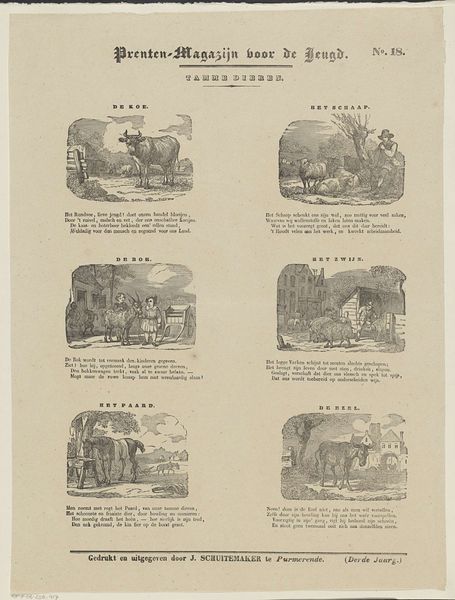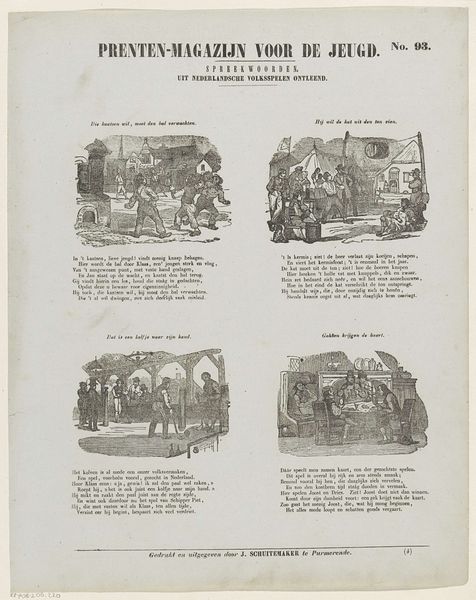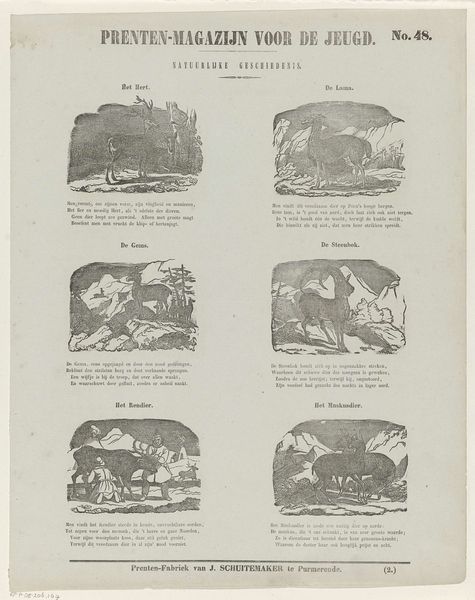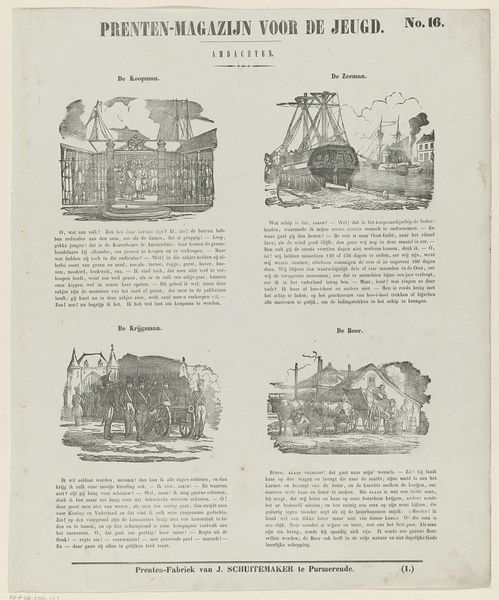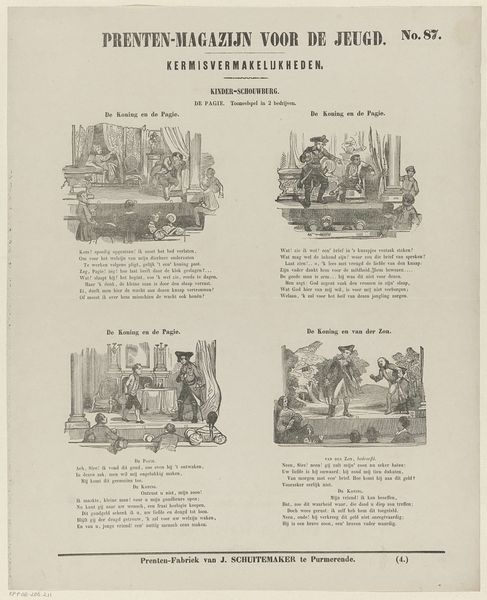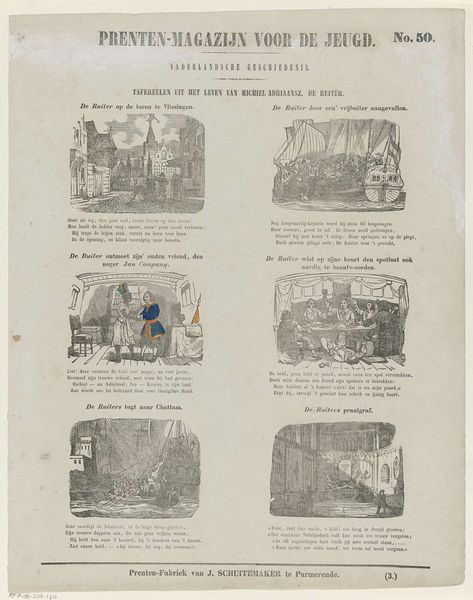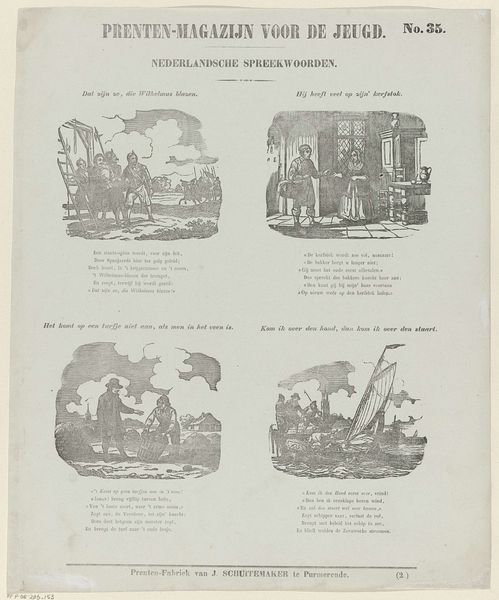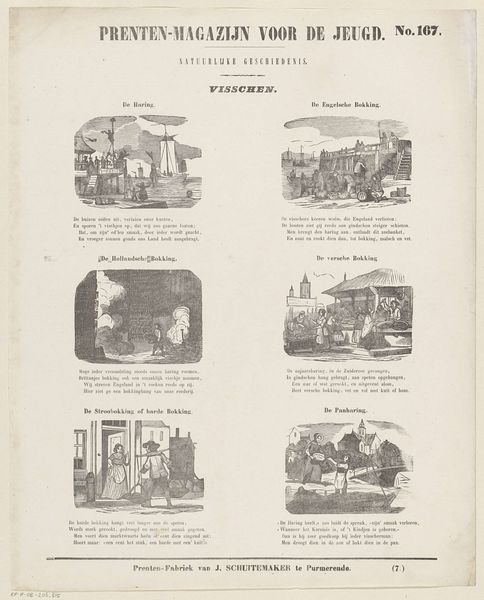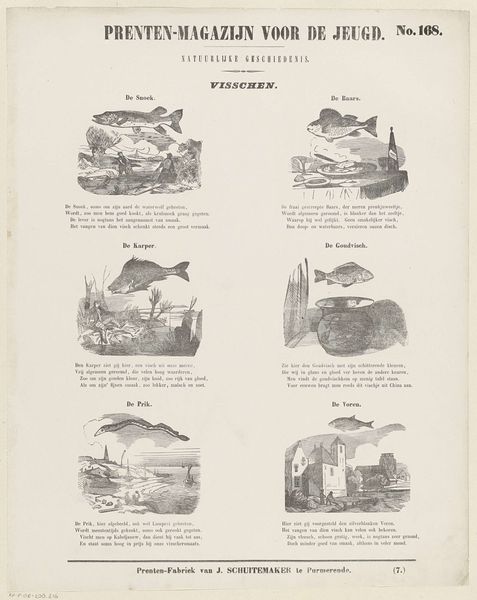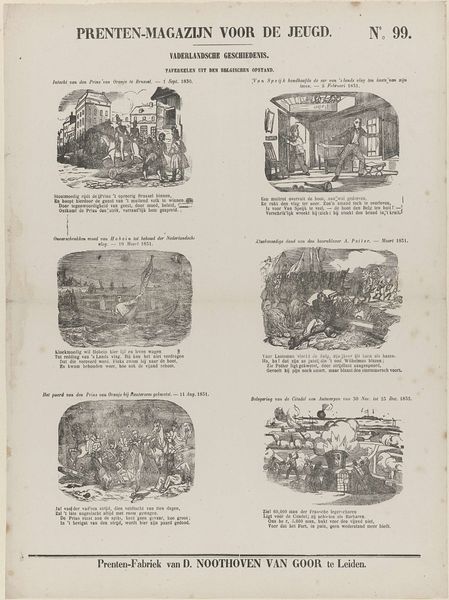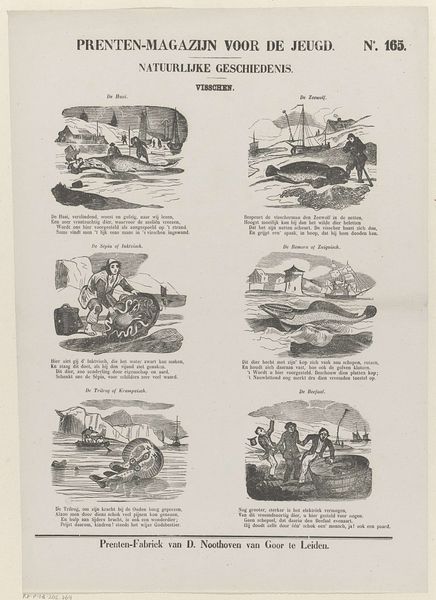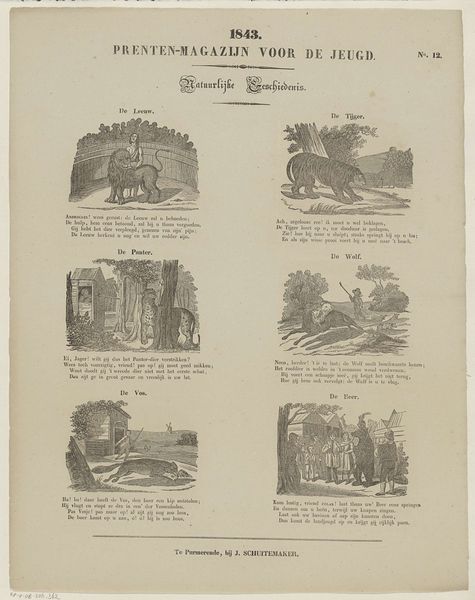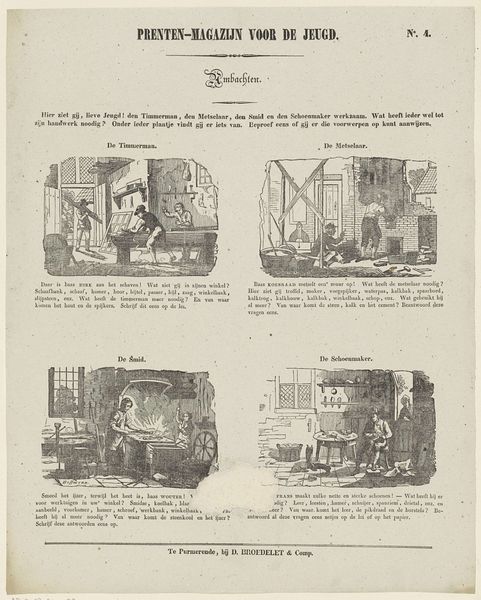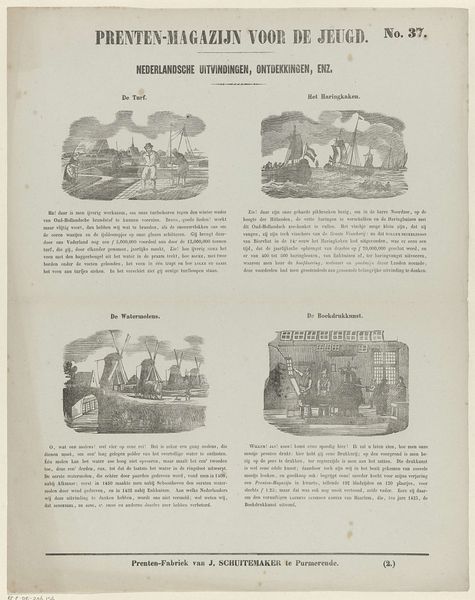
print, engraving
#
dutch-golden-age
# print
#
old engraving style
#
genre-painting
#
history-painting
#
engraving
Dimensions: height 414 mm, width 326 mm
Copyright: Rijks Museum: Open Domain
Curator: "Tamme Dieren," or "Domestic Animals," is an 1850 engraving by Jan Schuitemaker. It presents a page filled with vignettes of farm animals in a very particular, linear style. I’m initially struck by the rigidity of its composition; it seems less focused on artistry and more on the methodical display of information. What catches your eye? Editor: I notice the clear, almost scientific way each animal is presented within its individual frame. It reminds me of an encyclopedia or a study. How do you interpret this organized layout within the broader context of 19th-century Dutch art? Curator: Its format directs our reading. Notice how each scene is distinctly bordered. This compositional choice encourages a segmented reading experience. The uniformity emphasizes objectivity over expressiveness. How might these structural decisions relate to contemporary ideas regarding classification and scientific inquiry? Editor: Perhaps it’s meant to be educational, prioritizing clarity and order. But could that restrict the artwork’s potential for deeper emotional engagement? Curator: A valid observation. Restricting expressiveness might be its intention. Look closely at the lines forming each scene. What emotions do the techniques of engraving – hatchings and varied thickness – stir within you? Are they neutral? Editor: I can see a certain stillness within the engraving, a certain coldness, perhaps from the monochromatic palette. The use of line is descriptive, but not particularly evocative. Curator: Precisely. It compels the viewer to engage rationally, examining the specimens shown, rather than reacting emotionally. This is characteristic of its function and cultural milieu. Editor: I hadn't considered the emphasis on detached observation, but seeing how it shapes the structure really does change how I see the whole image. Curator: Indeed. Formal analysis allows us to perceive how even seemingly simple choices in composition, line, and structure contribute to a specific mode of perception.
Comments
No comments
Be the first to comment and join the conversation on the ultimate creative platform.
